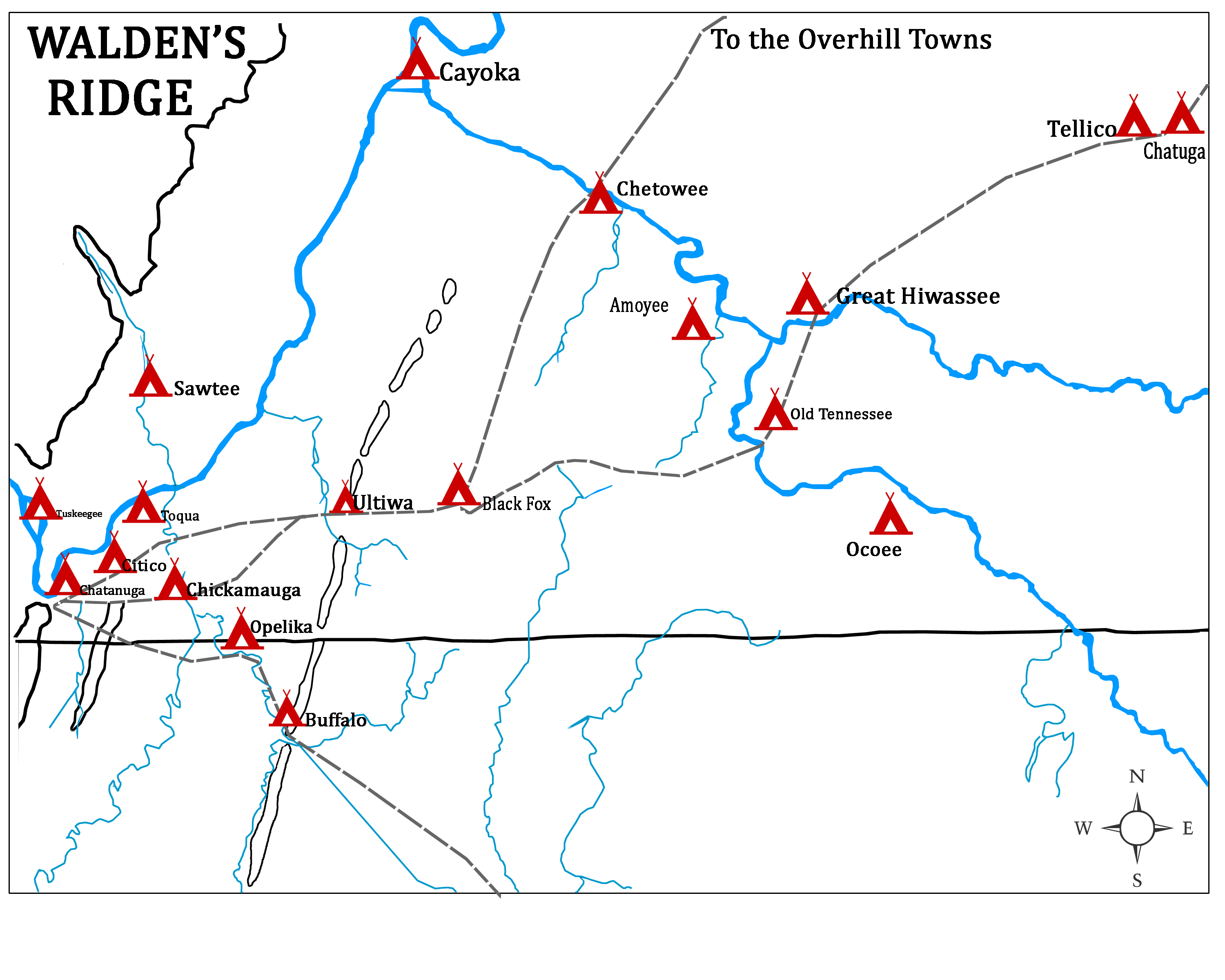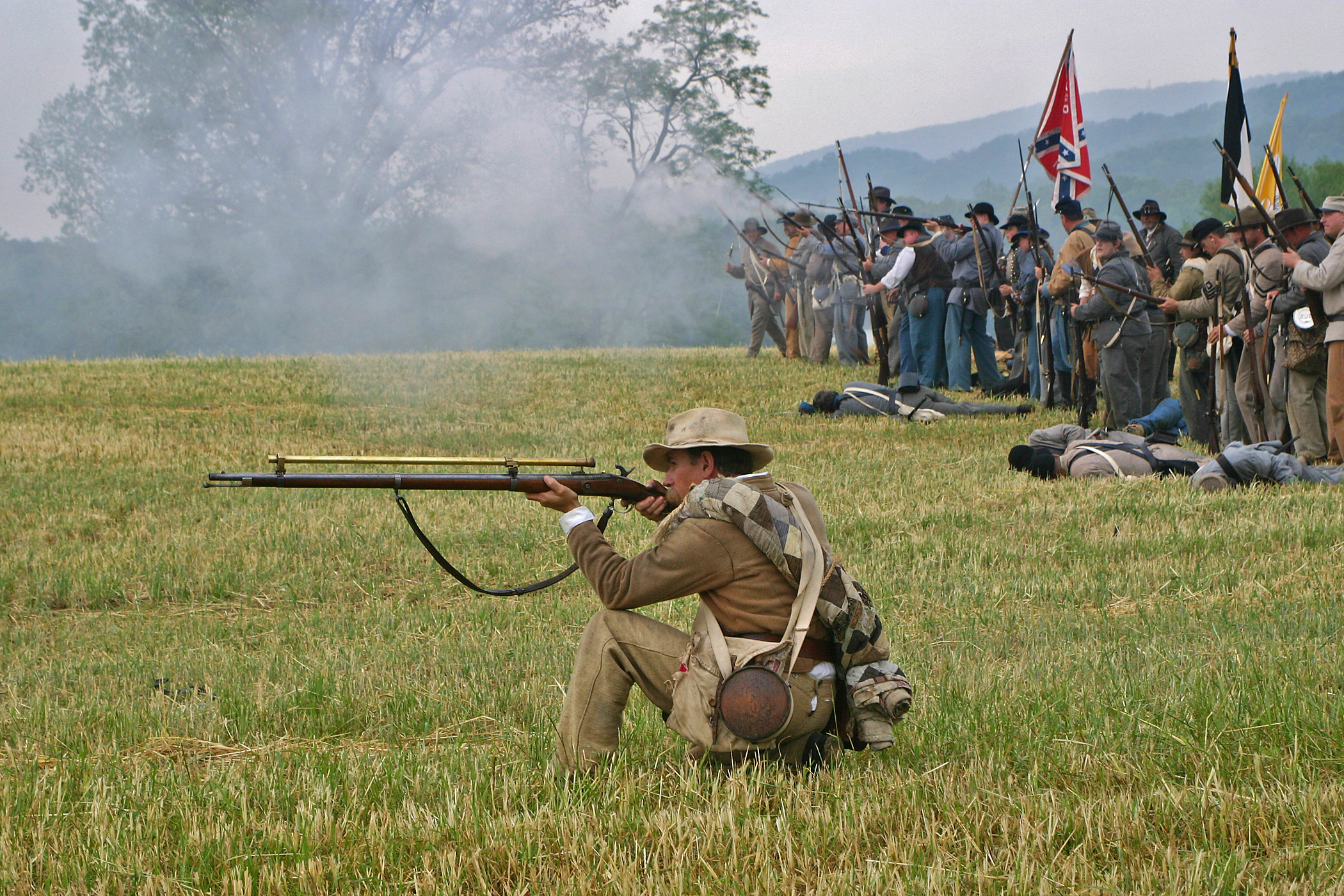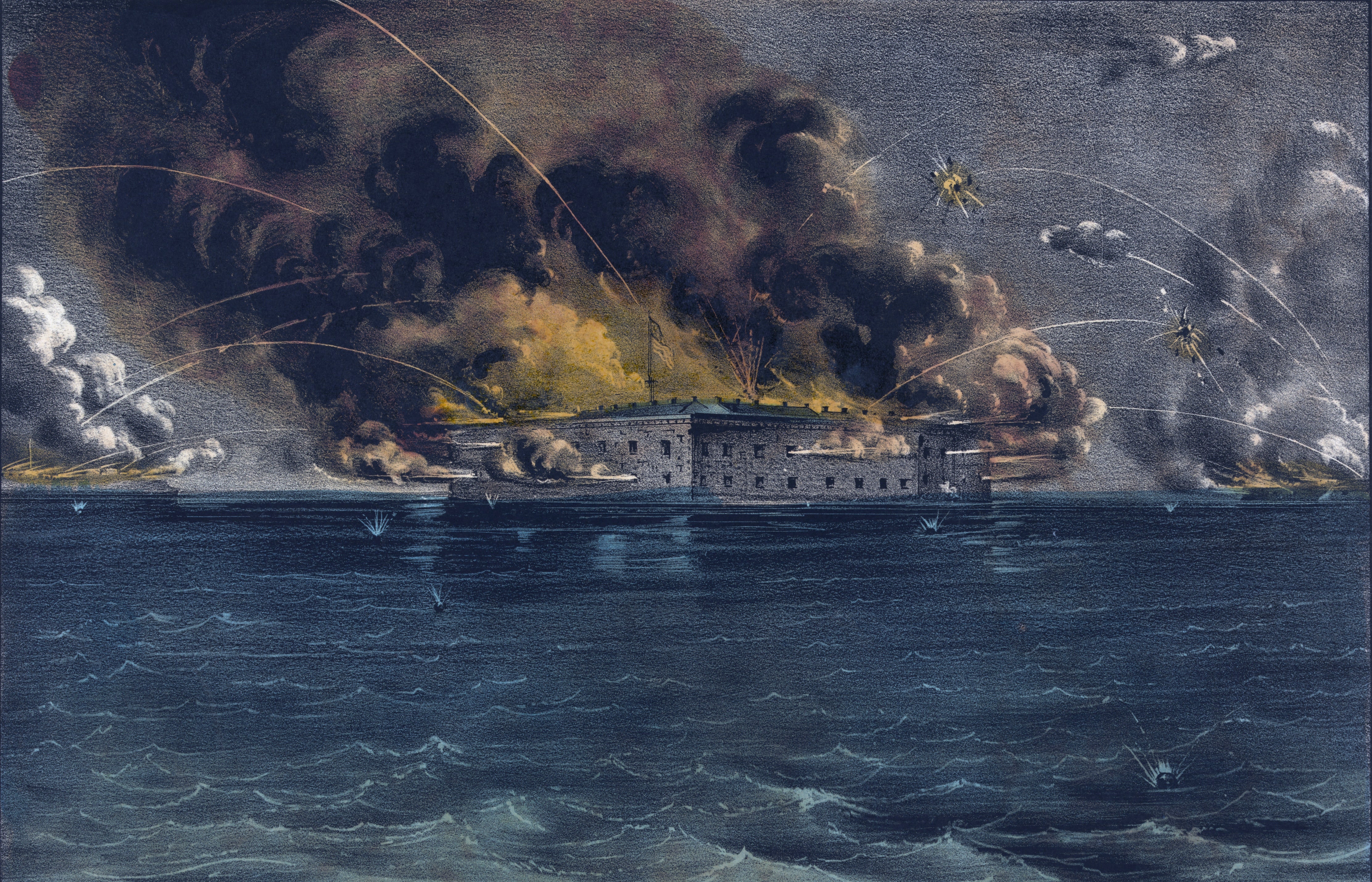|
Nickajack
The area known as "Nickajack" generally refers to the rugged Appalachian foothills in eastern Tennessee and northeastern Alabama. "Nickajack" is a corruption of the Cherokee word (Ani-Kusati-yi) which translates to Coosa Town, but more likely references Koasati Town.Brown, John P.; ''Old Frontiers: The Story of the Cherokee Indians from Earliest Times to the Date of Their Removal to the West, 1838''; February 1939 History In the late 18th century during the ongoing war with the Chickamauga, the area was inhabited by Chickamauga Cherokee and Muscogee-Creek warriors residing in the "Five Lower Towns" on the Tennessee River (near present-day Chattanooga). The warriors were mostly made up of the Cherokee, led by Dragging Canoe. Small groups of Shawnee and Creek lived with and fought with them, in addition to the occasional bands of Muskogee, who also served as allies. Renegade whites; white traders; Spanish, French, and British agents; and runaway slaves also inhabited the a ... [...More Info...] [...Related Items...] OR: [Wikipedia] [Google] [Baidu] |
Nickajack Lake
Nickajack Lake is the reservoir created by Nickajack Dam as part of the Tennessee Valley Authority. The lake stretches from Nickajack Dam to Chickamauga Dam, passing through the city of Chattanooga. The Tennessee River Gorge, commonly referred to as the "Grand Canyon of Tennessee", is also part of Nickajack Lake. Full pool for Nickajack Lake is approximately above sea level, and remains consistent during the course of the year, unlike nearby Chickamauga Lake. The world record for freshwater drum was caught from Nickajack Lake in 1972 by Benny Hull, and weighed in at . A lake sturgeon was caught in Nickajack Lake in 2011. This was the first sighting of one in the lake since they left the area in the 1960s. See also *Nickajack *Dams and reservoirs of the Tennessee River The Tennessee Valley Authority operates the Tennessee River system to provide a wide range of public benefits: year-round navigation, flood damage reduction, affordable electricity, improved water quality ... [...More Info...] [...Related Items...] OR: [Wikipedia] [Google] [Baidu] |
Cherokee–American Wars
The Cherokee–American wars, also known as the Chickamauga Wars, were a series of raids, campaigns, ambushes, minor skirmishes, and several full-scale frontier battles in the Old Southwest from 1776 to 1794 between the Cherokee and American settlers on the frontier. Most of the events took place in the Upper South region. While the fighting stretched across the entire period, there were extended periods with little or no action. The Cherokee leader Dragging Canoe, whom some historians call "the Savage Napoleon", and his warriors, and other Cherokee fought alongside and together with warriors from several other tribes, most often the Muscogee in the Old Southwest and the Shawnee in the Old Northwest. During the Revolutionary War, they also fought alongside British troops, Loyalist militia, and the King's Carolina Rangers against the rebel colonists, hoping to expel them from their territory. Open warfare broke out in the summer of 1776 in the Overmountain settlements of the W ... [...More Info...] [...Related Items...] OR: [Wikipedia] [Google] [Baidu] |
Historic Cherokee Settlements
The historic Cherokee settlements were Cherokee people, Cherokee settlements established in Southeastern North America up to the Indian removal, removals of the early 19th century. Several settlements had existed prior to and were initially contacted by explorers and colonists of the colonial powers as they made inroads into frontier areas. Others were established later. In the early 18th century, an estimated 2100 Cherokee people inhabited more than sixteen towns east of the Blue Ridge Mountains and across the Piedmont Crescent, Piedmont plains in what was then considered Indian Country."Cherokee "towns" were settlements equipped with a great hall or council halls (Cherokee:''gatuyi'', or town house); villages and satellite settlements usually had no communal great halls." Generally, European visitors noted only the towns with townhouses. Some of their maps included lesser settlements, but "the centers of towns were clearly marked by townhouses and plazas." The early Cherokee ... [...More Info...] [...Related Items...] OR: [Wikipedia] [Google] [Baidu] |
East Tennessee
East Tennessee is one of the three Grand Divisions of Tennessee defined in state law. Geographically and socioculturally distinct, it comprises approximately the eastern third of the U.S. state of Tennessee. East Tennessee consists of 33 counties, 30 located within the Eastern Time Zone and three counties in the Central Time Zone, namely Bledsoe, Cumberland, and Marion. East Tennessee is entirely located within the Appalachian Mountains, although the landforms range from densely forested mountains to broad river valleys. The region contains the major cities of Knoxville and Chattanooga, Tennessee's third and fourth largest cities, respectively, and the Tri-Cities, the state's sixth largest population center. During the American Civil War, many East Tennesseans remained loyal to the Union even as the state seceded and joined the Confederacy. Early in the war, Unionist delegates unsuccessfully attempted to split East Tennessee into a separate state that would remain as part ... [...More Info...] [...Related Items...] OR: [Wikipedia] [Google] [Baidu] |
Tennessee River
The Tennessee River is the largest tributary of the Ohio River. It is approximately long and is located in the southeastern United States in the Tennessee Valley. The river was once popularly known as the Cherokee River, among other names, as the Cherokee people had their homelands along its banks, especially in what are now East Tennessee and northern Alabama. Additionally, its tributary, the Little Tennessee River, flows into it from Western North Carolina and northeastern Georgia, where the river also was bordered by numerous Cherokee towns. Its current name is derived from the Cherokee town, ''Tanasi'', which was located on the Tennessee side of the Appalachian Mountains. Course The Tennessee River is formed at the confluence of the Holston and French Broad rivers in present-day Knoxville, Tennessee. From Knoxville, it flows southwest through East Tennessee into Chattanooga before crossing into Alabama. It travels through the Huntsville and Decatur area before rea ... [...More Info...] [...Related Items...] OR: [Wikipedia] [Google] [Baidu] |
Chickamauga Cherokee
The Chickamauga Cherokee refers to a group that separated from the greater body of the Cherokee during the American Revolutionary War. The majority of the Cherokee people wished to make peace with the Americans near the end of 1776, following several military setbacks and American reprisals. The followers of the skiagusta (or red chief), Dragging Canoe, moved with him in the winter of 1776–77 down the Tennessee River away from their historic Overhill Cherokee towns. Relocated in a more isolated area, they established 11 new towns in order to gain distance from colonists' encroachments. The frontier Americans associated Dragging Canoe and his band with their new town on Chickamauga Creek and began to refer to them as the ''Chickamaugas.'' Five years later, the Chickamauga moved further west and southwest into present-day Alabama, establishing five larger settlements. They were then more commonly known as the ''Lower Cherokee''. This term was closely associated with the peop ... [...More Info...] [...Related Items...] OR: [Wikipedia] [Google] [Baidu] |
Turtle-at-Home
Turtle-at-Home, or Selukuki Wohelengh, was a Cherokee warrior and leader, brother and chief lieutenant of Dragging Canoe, a war-chief in the Cherokee–American wars. Early battles In the beginning and the later years, he led Chickamauga Cherokee war parties against the overmountain settlements on the Holston, Nolichucky, Watauga, and Doe Rivers in modern East Tennessee; and against the Cumberland River settlements near Fort Nashborough in modern Middle Tennessee. Later battles After the second destruction of the Chickamauga Towns in 1782, instead of moving to the Five Lower Towns with his brother and the rest of the Chickamauga/Lower Cherokee, he and his band of about seventy warriors headed north into the " Kentucke territory," to fight alongside their Shawnee allies. Northwest Indian War Turtle-at-Home and his band remained in the north until after the 1791 Battle of the Wabash (during the Northwest Indian War), in which he and his warriors—along with two parties brou ... [...More Info...] [...Related Items...] OR: [Wikipedia] [Google] [Baidu] |
Eastern Tennessee
East Tennessee is one of the three Grand Divisions of Tennessee defined in state law. Geographically and socioculturally distinct, it comprises approximately the eastern third of the U.S. state of Tennessee. East Tennessee consists of 33 counties, 30 located within the Eastern Time Zone and three counties in the Central Time Zone, namely Bledsoe, Cumberland, and Marion. East Tennessee is entirely located within the Appalachian Mountains, although the landforms range from densely forested mountains to broad river valleys. The region contains the major cities of Knoxville and Chattanooga, Tennessee's third and fourth largest cities, respectively, and the Tri-Cities, the state's sixth largest population center. During the American Civil War, many East Tennesseans remained loyal to the Union even as the state seceded and joined the Confederacy. Early in the war, Unionist delegates unsuccessfully attempted to split East Tennessee into a separate state that would remain as pa ... [...More Info...] [...Related Items...] OR: [Wikipedia] [Google] [Baidu] |
Dragging Canoe
Dragging Canoe (ᏥᏳ ᎦᏅᏏᏂ, pronounced ''Tsiyu Gansini'', "he is dragging his canoe") (c. 1738 – February 29, 1792) was a Cherokee war chief who led a band of Cherokee warriors who resisted colonists and United States settlers in the Upper South. During the American Revolution and afterward, Dragging Canoe's forces were sometimes joined by Upper Muskogee, Chickasaw, Shawnee, and Indians from other tribes/nations, along with British Loyalists, and agents of France and Spain. The series of conflicts lasted a decade after the American Revolutionary War. Dragging Canoe became the preeminent war leader among the Indians of the southeast. He served as war chief, or ''skiagusta'', of the group known as the Chickamauga Cherokee (or "Lower Cherokee"), from 1777 until his death in 1792. He was succeeded by John Watts. Biography Born about 1738, he was the son of Attakullakulla ("Little Carpenter," a Nipissing Head Man) and ''Nionne Ollie'' ("Tame Doe" a Natchez adopted Che ... [...More Info...] [...Related Items...] OR: [Wikipedia] [Google] [Baidu] |
Coushatta
The Coushatta ( cku, Koasati, Kowassaati or Kowassa:ti) are a Muskogean-speaking Native American people now living primarily in the U.S. states of Louisiana, Oklahoma, and Texas. When first encountered by Europeans, they lived in the territory of present-day Tennessee, Georgia and Alabama. They were historically closely allied and intermarried with the Alabama people, also members of the Creek Confederacy. Their languages are closely related and mutually intelligible. Under pressure from Anglo-American colonial settlement after 1763 and the French defeat in the Seven Years' War, they began to move west into Mississippi, Louisiana and Texas, which were then under Spanish rule. They became settled in these areas by the early 19th century. Some of the Coushatta and Alabama people were removed west to Indian Territory (now Oklahoma) in the 1830s under Indian Removal, together with other Muscogee (Creek) peoples. Today, Coushatta people are enrolled in three federally recogniz ... [...More Info...] [...Related Items...] OR: [Wikipedia] [Google] [Baidu] |
Origins Of The American Civil War
Historians who debate the origins of the American Civil War focus on the reasons that seven Southern states (followed by four other states after the onset of the war) declared their secession from the United States (the Union) and united to form the Confederate States (known as the "Confederacy"), and the reasons that the North refused to let them go. Proponents of the pseudo-historical Lost Cause ideology have denied that slavery was the principal cause of the secession. While historians in the 21st century agree on the centrality of the conflict over slavery—it was not just "a cause" of the war but "the cause"—they disagree sharply on which aspects of this conflict (ideological, economic, political, or social) were most important. The principal political battle leading to Southern secession was over whether slavery would be permitted to expand into newly acquired Western territories destined to become states. Initially Congress had admitted new states into the Union ... [...More Info...] [...Related Items...] OR: [Wikipedia] [Google] [Baidu] |
Guano
Guano (Spanish from qu, wanu) is the accumulated excrement of seabirds or bats. As a manure, guano is a highly effective fertilizer due to the high content of nitrogen, phosphate, and potassium, all key nutrients essential for plant growth. Guano was also, to a lesser extent, sought for the production of gunpowder and other explosive materials. The 19th-century seabird guano trade played a pivotal role in the development of modern input-intensive farming. The demand for guano spurred the human colonization of remote bird islands in many parts of the world. Unsustainable seabird guano mining processes can result in permanent habitat destruction and the loss of millions of seabirds. Bat guano is found in caves throughout the world. Many cave ecosystems are wholly dependent on bats to provide nutrients via their guano which supports bacteria, fungi, invertebrates, and vertebrates. The loss of bats from a cave can result in the extinction of species that rely on their guano. U ... [...More Info...] [...Related Items...] OR: [Wikipedia] [Google] [Baidu] |







